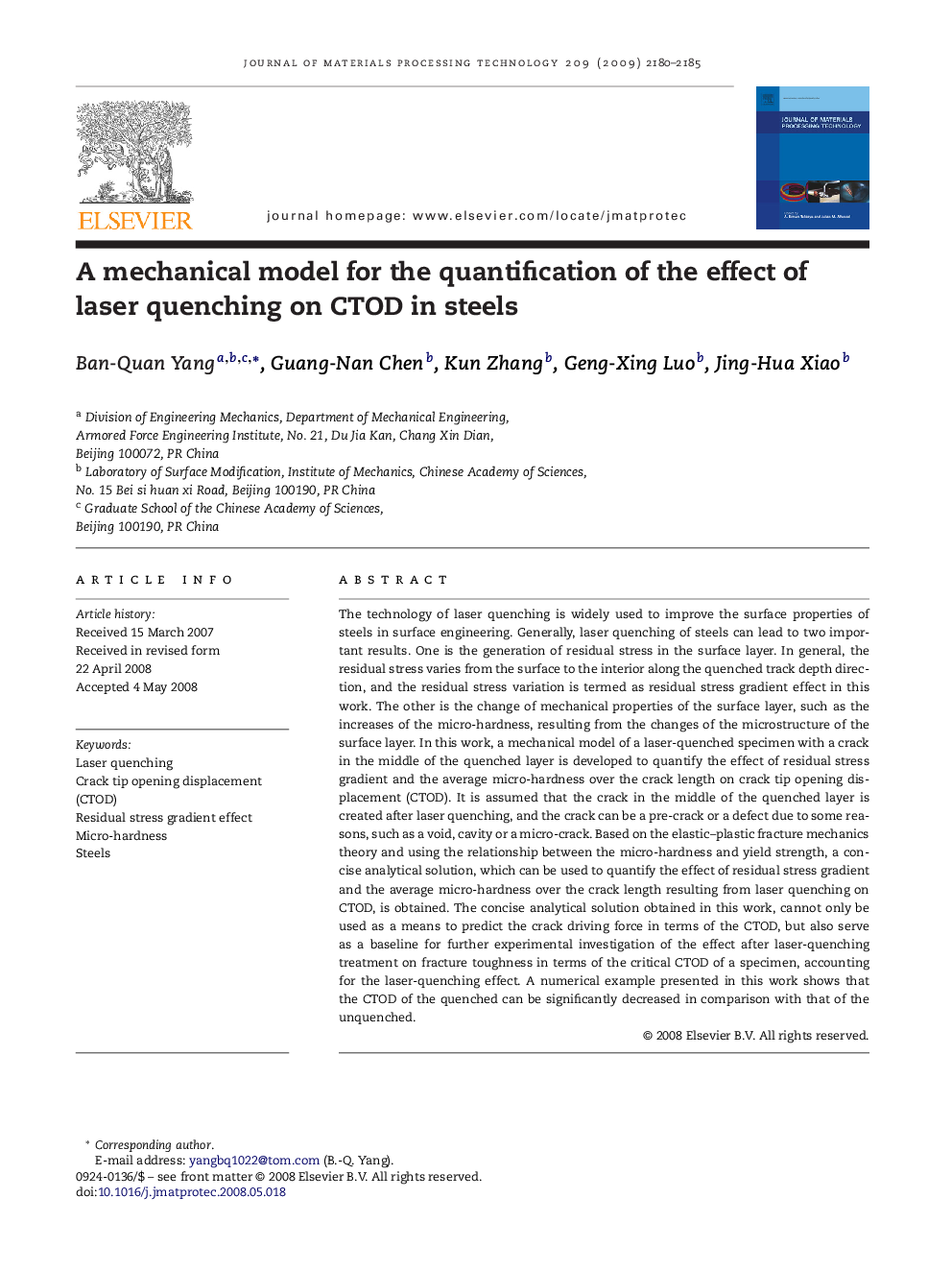| Article ID | Journal | Published Year | Pages | File Type |
|---|---|---|---|---|
| 798612 | Journal of Materials Processing Technology | 2009 | 6 Pages |
The technology of laser quenching is widely used to improve the surface properties of steels in surface engineering. Generally, laser quenching of steels can lead to two important results. One is the generation of residual stress in the surface layer. In general, the residual stress varies from the surface to the interior along the quenched track depth direction, and the residual stress variation is termed as residual stress gradient effect in this work. The other is the change of mechanical properties of the surface layer, such as the increases of the micro-hardness, resulting from the changes of the microstructure of the surface layer. In this work, a mechanical model of a laser-quenched specimen with a crack in the middle of the quenched layer is developed to quantify the effect of residual stress gradient and the average micro-hardness over the crack length on crack tip opening displacement (CTOD). It is assumed that the crack in the middle of the quenched layer is created after laser quenching, and the crack can be a pre-crack or a defect due to some reasons, such as a void, cavity or a micro-crack. Based on the elastic–plastic fracture mechanics theory and using the relationship between the micro-hardness and yield strength, a concise analytical solution, which can be used to quantify the effect of residual stress gradient and the average micro-hardness over the crack length resulting from laser quenching on CTOD, is obtained. The concise analytical solution obtained in this work, cannot only be used as a means to predict the crack driving force in terms of the CTOD, but also serve as a baseline for further experimental investigation of the effect after laser-quenching treatment on fracture toughness in terms of the critical CTOD of a specimen, accounting for the laser-quenching effect. A numerical example presented in this work shows that the CTOD of the quenched can be significantly decreased in comparison with that of the unquenched.
